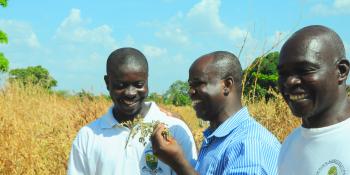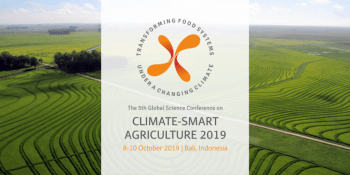Identifying indicators to study food systems governance in future research

Use of common indicators to study governance of food production can improve prospects for meta-analysis of next-generation research.
When we think about how our food systems are governed, we might think only about the government’s laws and regulations. But food system governance extends beyond the formal governmental involvement to broader issues of markets, supply chains, and agribusiness networks that all influence how, where and why we make certain food choices.
A study carried out by the CGIAR Research Program on Climate Change, Agriculture and Food Security (CCAFS) and partners examined indicators used in research on governance of food systems. It found a heavy concentration of indicators for governance of food production, ranging from local governance to national governance levels, and a corresponding lack of indicators in the distribution and consumption sectors and at supra-national levels.
The review, first released in the form of a working paper, was the basis for a recently published article in the journal Food Security which was funded by the CCAFS flagship on Priorities and Policies for Climate-Smart Agriculture (CSA).
Aogán Delaney, one of the authors of the working paper and the article, shared research results on the CCAFS blog. In his blog, he wrote:
Many current studies are site-specific and use a multitude of different theories and methods in their research designs. This has the unfortunate implication that it is impossible to draw broader conclusions, generalizable beyond the specific sites of research, about how to best govern food systems to improve food security despite the increase in studies published since the 2008 food price crisis."
He further explained:
"The concentration of indicators in the production sector suggests that, although the food systems concept captures the extension of food production along the value chain and the dimensions of availability, access, utilization and stability reflect that achieving food security is about more than just increasing yields. Despite limitations acknowledged in the report, this situation still presents obstacles to a common research design that will produce comparable results that can be meta-analysed. In particular, the shortage of indicators for governance of food distribution and consumption sectors possibly reflects less cross-disciplinary engagement in the study of governance of food systems than is often assumed. Another likely explanation is that studies which do focus on governance of food distribution or consumption have not yet adopted systems-approaches in their research designs."
Next steps
"The immediate priorities include piloting and testing of the indicators identified in the review and developing indicators for governance levels and food sectors which have been found wanting. Next, this set of indicators will need to be integrated into a fully developed research design based on recognized theories of food systems governance. As a longer-term priority, these initial steps are expected to lead to a consolidated methodological framework, for which we recommend that CCAFS encourage uptake through networks and funded programmes. These necessary steps are expected to lead to a body of comparable evidence that can be aggregated—in time—in a meta-analysis to reach generalizable conclusions addressing the critical question of how governance can improve food security."
Read the full story on the CCAFS blog: Identifying a core set of indicators to improve future research on food systems governance
Read more:
- Journal article: Governance of food systems across scales in times of social-ecological change: a review of indicators
- Blog: Comparative politics role in studying climate adaptation and food system governance
- Working paper: Transformation in governance towards resilient food systems
We acknowledge the CGIAR Fund Council, Australia (ACIAR), Irish Aid, European Union, International Fund for Agricultural Development (IFAD), Netherlands, New Zealand, Switzerland, UK, USAID and Thailand for funding to the CGIAR Research Program on Climate Change, Agriculture and Food Security (CCAFS).
The research for this article was funded by the CGIAR Research Program on Climate Change, Agriculture and Food Security (CCAFS), under the Priorities and Policies for CSA Flagship.
This article builds upon an earlier version which appeared as a CCAFS Working Paper, number 167.
This work was also supported by the US National Science Foundation (grant numbers BCS-1534544, SES-1360421, and SES-1360463) and some authors benefitted from support from the R4D project BFood Sustainability^ funded by the Swiss National Science Foundation (SNSF 400540-152033). We would like to thank Katrien Termeer for helpful insights throughout the project. Thanks are also extended to all those who helped by suggesting literature during consultation, all authors who responded to requests during the review and to Patricia Lezotte of the OstromWorkshop at Indiana University for invaluable assistance during drafting. We acknowledge the services of the Bibliothèque Nationale de Luxembourg for providing access to materials reviewed.
Lili Szilagyi is the Communications consultant for the CCAFS Flagship on Priorities and Policies for CSA. Laura Cramer is the Science officer for the CCAFS Flagship on Priorities and Policies for CSA.
The original blog was written by Aogán Delaney, an independent consultant based in Luxembourg.



